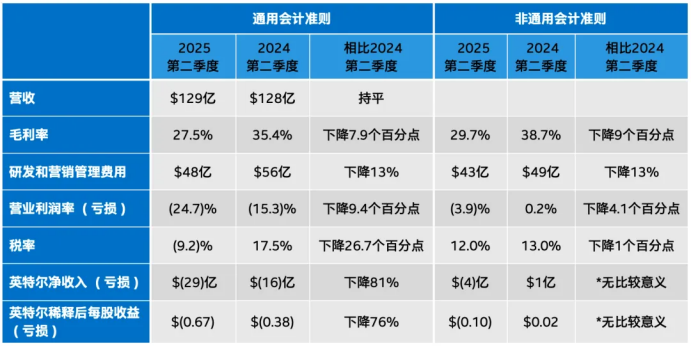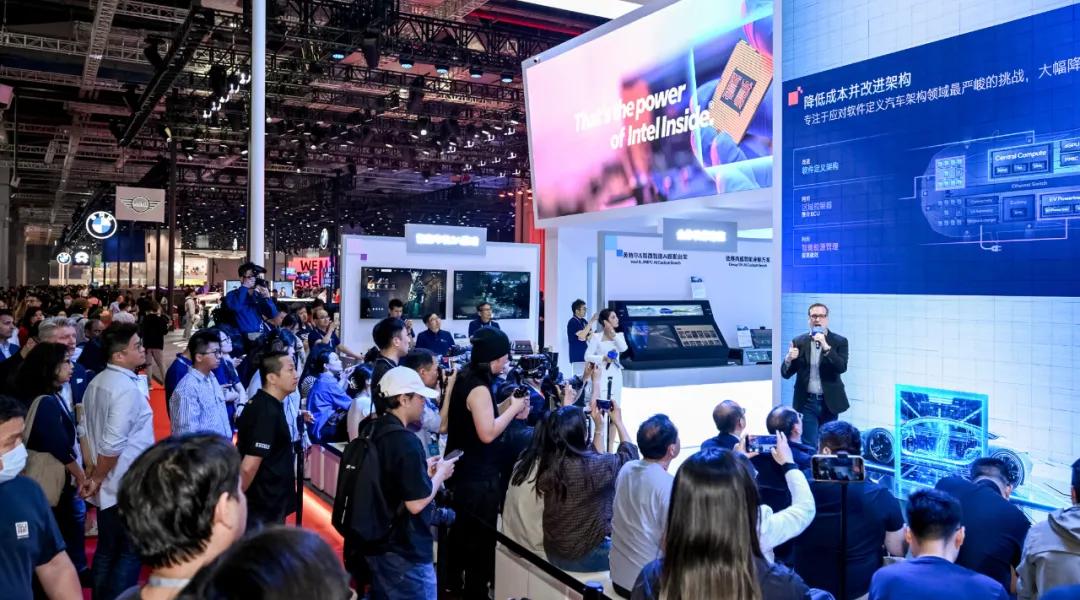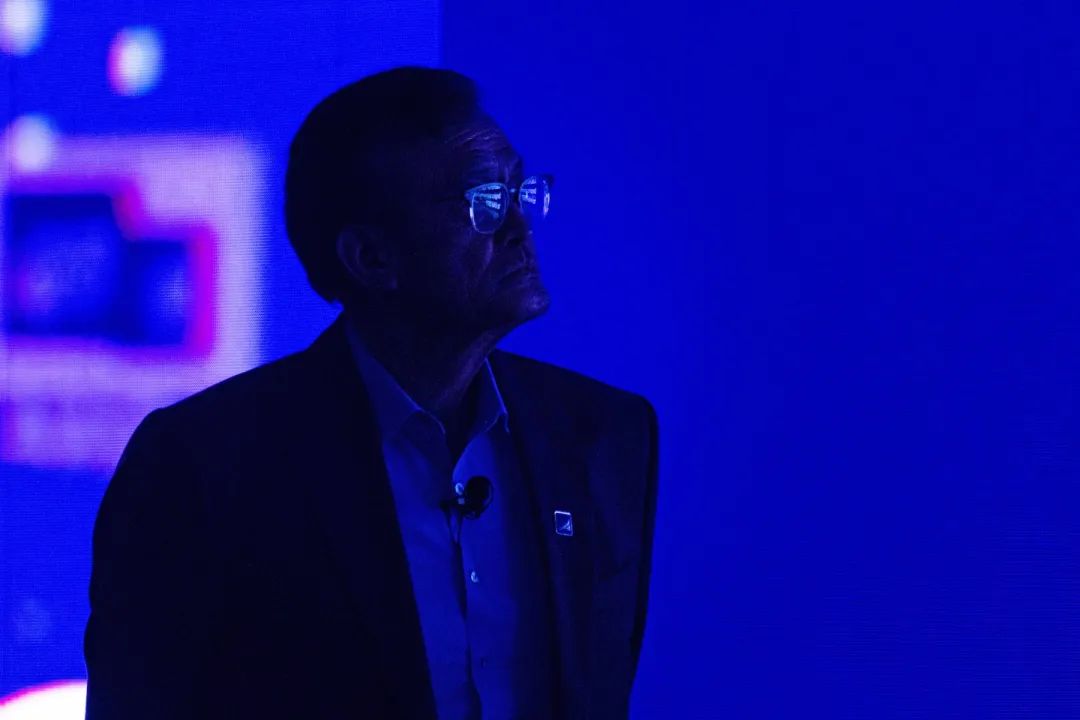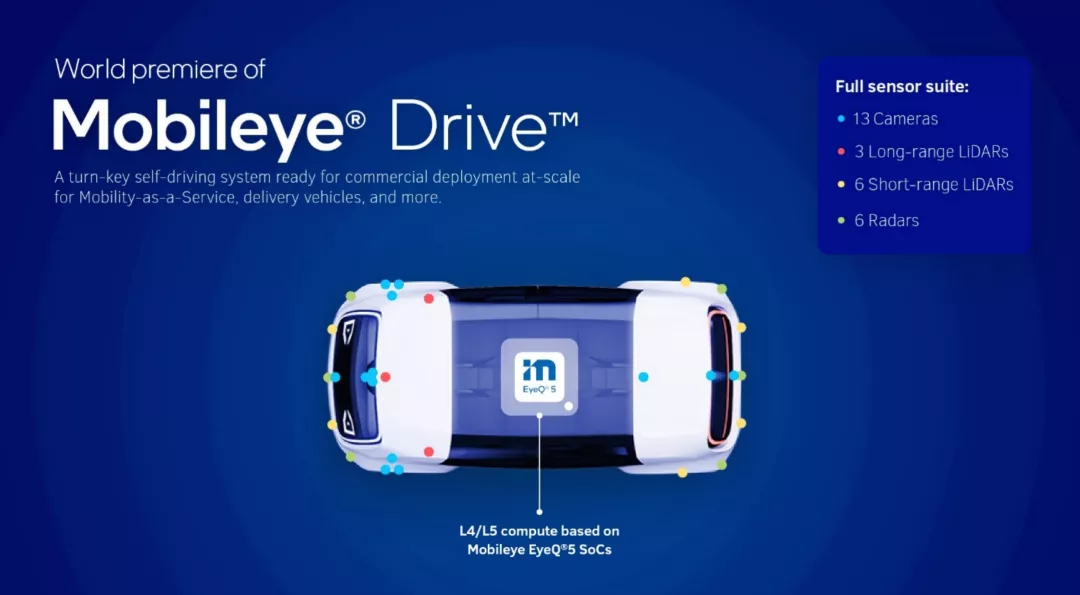Intel Severs Arm to Survive, Automotive Business Fails
Just over two months after establishing its automotive business headquarters in China, Intel has shut down its automotive business.
It has nothing to do with China, nothing to do with the prospects of the automotive business, and it is a concentrated outbreak of Intel's poor management over the years.
On July 24, Intel released its financial report for the second quarter of 2025. This former chip giant is now suffering heavy losses and has reached a point where it must make drastic sacrifices to survive.

Revenue reached $12.9 billion, at the high end of Intel's forecast range, remaining flat compared to the second quarter of last year, largely benefiting from customers' purchasing behavior driven by concerns over tariffs and other factors.
The gross profit margin decreased by 7.9 percentage points.
The net loss was $2.9 billion, an increase of $1.3 billion compared to the same period.
The overall tone of the second quarterly report is that there is no way to increase revenue, so cost-cutting is the only option.
CEO Chen Liwu stated that the manufacturing projects in Germany and Poland will no longer continue. "We also plan to consolidate the packaging and testing operations in Costa Rica into our larger existing facilities in Vietnam and Malaysia. Additionally, we will further slow down the construction progress in Ohio to ensure our expenditures align with market demand."
More painfully, layoffs are planned, with Intel setting a target to cut 75,000 employees by the end of the year. In the second quarter, Intel has already completed most of these cuts, including those in the automotive business.
Intel CFO David Zinsner revealed that a $1.9 billion expense was incurred in the second quarter, most of which is related to severance pay for employee layoffs.
In addition, Intel is also selling off non-core assets to maintain cash flow. They raised about $900 million by selling shares of Mobileye and are expected to complete the sale of Altera in the third quarter.
Although the automotive business accounts for only a small portion of Intel’s overall operations, when the nest is overturned, how can any egg remain intact?
"Intel seems to have a strange tradition of always trying out new ideas, but then killing them off before seeing results."
In the book "A Brief History of Artificial Intelligence," the author evaluates Intel in this way.
Intel at this moment undoubtedly must strive for survival, but in the process, it might also lose the future.
01
The automotive business was aborted.
At the beginning of 2024 at CES, Intel is preparing to launch an offensive in the automotive business, competing with old rivals such as NVIDIA and Qualcomm.
At that time, Jack Weast, head of Intel's automotive division, said, "Intel is bringing AI PCs to cars."
Intel proposed three major directions: intelligent cockpit chips, electric vehicle energy AI management, and an open custom platform for automotive chips. At that time, Intel also announced collaborations with car companies like Zeekr to create an "enhanced living room experience," including AI voice assistants and video conferencing, among other features.
At the 2025 Shanghai Auto Show (see image below), Intel's ambitions in the automotive sector have become further revealed.

At the 2025 Shanghai Auto Show, Intel participated for the first time. Alongside unveiling new products, it also hosted events to introduce the direction and progress of its automotive business to Chinese automotive media, including the launch of the second-generation AI-enhanced software-defined vehicle SoC, in collaboration with Mianbi Intelligence.Black sesame(6.210, 0.01, 0.16%)Intelligent enterprises are cooperating in areas such as smart cockpits and integrated cockpit-driving platforms, demonstrating their firm commitment to the Chinese automotive market.
Jack Weast made a reappearance and boldly stated, "The reason Intel is entering the automotive industry, and the reason I moved to China, is because we believe the automotive business is one of Intel's growth opportunities, and the future of the global automotive industry is being created today in China."
However, just two months later, news came that Intel was shutting down its automotive business. Jack Weast moved back to the United States.
Jack Weast's embodiment of Intel's attitude towards the automotive business is basically consistent with that of former CEO Pat Gelsinger.
In 2021, Kissinger stated that the overall market size of automotive chips would more than double by 2030, reaching $115 billion—approximately 11% of the entire chip market. Intel has great potential, given that the chip manufacturing processes used by automotive manufacturers are lagging behind.
However, these approaches are completely different from the ideas of Intel’s new CEO, Pat Gelsinger. This is also the reason why Intel’s automotive business has been struggling between survival and demise.
02
Another Chinese "Savior"
In March 2024, Chen Liwu became the CEO of Intel.
After he took office, the top positions at major American chip giants were almost all held by Chinese—Jensen Huang at NVIDIA, Lisa Su at AMD, and Hock Tan at Broadcom.
Especially after Su Zifeng reversed AMD's decline, Chen Liwu was expected to become Intel's savior. However, Intel's task is even more challenging.
Chen Liwu, 65 years old, was born in Singapore with ancestral roots in Fuqing, Fujian. In his youth, he studied abroad in the United States, attending the Massachusetts Institute of Technology (MIT), where he was a schoolmate of Lisa Su, Jensen Huang, Charles Chen, and Morris Chang.
Chen Liwu once took over the global EDA giant Cadence Design Systems and turned it around from the brink of bankruptcy to doubling its revenue and increasing its stock price by 3200%, demonstrating impressive "firefighting" abilities.

After Chen Liwu (pictured above) took office, he prescribed targeted remedies and made it clear that, on one hand, he would declare war on bureaucratism within Intel by downsizing departments, reducing management layers, and improving efficiency; on the other hand, he would focus on core businesses and spin off non-essential assets.
In its core business, Intel focuses on its strengths in the client and data center sectors. Although the automotive business is part of Intel's PC product segment, it is considered a secondary task rather than a mainline priority.
At the end of June, the Sword of Damocles fell, and the automotive business division was shut down.
Intel's internal letter to employees was exposed by the media. Intel stated that as part of the company's focus on core products, it has decided to gradually shut down its automotive business. Although the company will fulfill its existing commitments to automotive customers, it will lay off the majority of employees in the automotive division.
In the employee reduction plan for the second quarter that Chen Liwu mentioned has mostly been completed, the automotive business is the first to be affected.
03
Where is Mobileye headed?
Intel's automotive business is not very large, but it owns a well-known company—Mobileye.
Founded in 1999, this company applied computer vision technology and machine learning to driver assistance systems, gaining favor from numerous car manufacturers such as BMW, Audi, Volkswagen, Nissan, Honda, and even early Tesla. It was once the strongest startup in the field. In 2017, Intel fully acquired it for $15.3 billion.
However, in recent years, as other startups and car manufacturers have also adopted similar technological approaches to develop driver assistance and autonomous driving, Mobileye's first-mover advantage has been steadily eroded. It has continuously lost customers, and the competitiveness of its products has significantly declined. Tesla has developed its own technology, and even the Chinese company Zeekr has abandoned this "brother company" (Intel has invested in Zeekr).

In 2024, Mobileye’s annual revenue was $1.65 billion, a significant year-on-year decrease of 20%. The company reported a net loss of as much as $3 billion for the year.
In the first half of 2025, Mobileye's revenue and profit both improved. However, Mobileye's prospects remain bleak.
Against this backdrop, Intel, undergoing a slimming down cycle, began to withdraw from Mobileye.
On July 8, Mobileye announced that Intel would sell company stocks worth $900 million, and Mobileye would directly buy back stocks worth $100 million from Intel. After this, Intel's stake in Mobileye will decrease to less than 80%.
However, starting in 2022, Mobileye has been operating independently. Therefore, Intel’s closure of its automotive division does not directly affect Mobileye’s operations.
But will Intel completely abandon Mobileye?
Chen Liwu and Intel have not yet commented on this. However, judging from Nvidia’s continuous approach to potential buyers to take over its non-core assets, it is clear that Mobileye is by no means off the table.
The IP related to automotive chips is still within Intel, serving as the seed for the future development of its automotive business.
Actually, former CEO Kissinger and Jack Weast's judgment on the prospects of the automotive chip business was not wrong; it is just that Intel is no longer capable of large-scale expansion at this time.
Intel, which entered the automotive market as early as 1976, has already missed the opportunity to become a giant in automotive chips. Chen Liwu criticized that Intel has lost the spirit of "Only the Paranoid Survive" established by Andy Grove, and more importantly, Intel missed the timing.
【Copyright and Disclaimer】The above information is collected and organized by PlastMatch. The copyright belongs to the original author. This article is reprinted for the purpose of providing more information, and it does not imply that PlastMatch endorses the views expressed in the article or guarantees its accuracy. If there are any errors in the source attribution or if your legitimate rights have been infringed, please contact us, and we will promptly correct or remove the content. If other media, websites, or individuals use the aforementioned content, they must clearly indicate the original source and origin of the work and assume legal responsibility on their own.
Most Popular
-

List Released! Mexico Announces 50% Tariff On 1,371 China Product Categories
-

Nissan Cuts Production of New Leaf EV in Half Due to Battery Shortage
-

New Breakthrough in Domestic Adiponitrile! Observing the Rise of China's Nylon Industry Chain from Tianchen Qixiang's Production
-

Dow, Wanhua, Huntsman Intensively Raise Prices! Who Controls the Global MDI Prices?
-

Clariant Unveils Cost-Cutting Plan Details, Plans to Shut Down Multiple Plants






